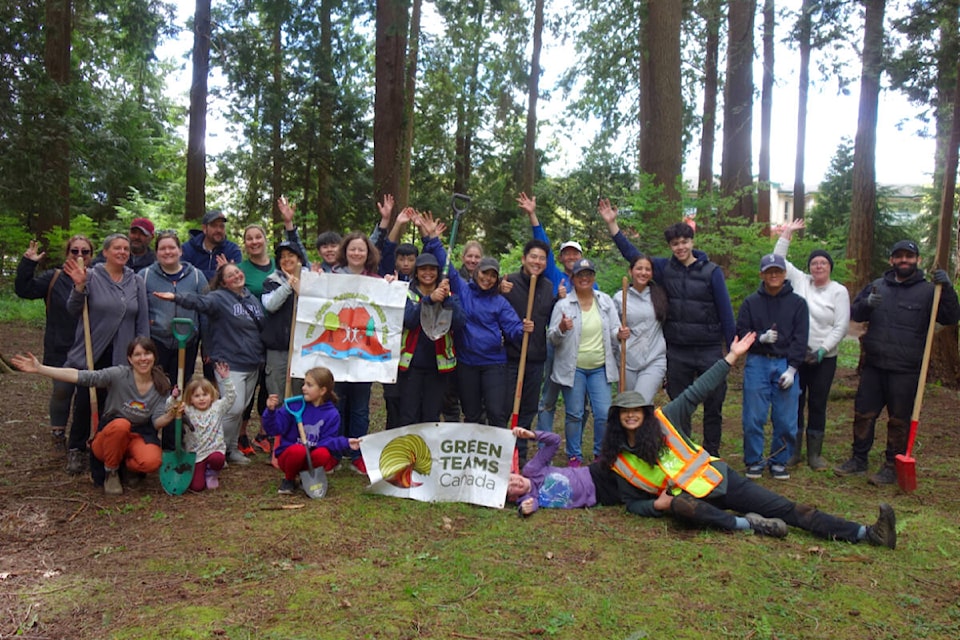With May now upon us, B.C. ushers in Invasive Species Action Month, which is a chance for nature-minded people to work together to help reduce the amount of invasive plants and animals spreading throughout the province.
Gail Wallin, executive director of the Invasive Special Council of BC, explained that invasive plants can take all sorts of shapes and sizes, with many gardeners not even knowing that some of their plants might be deemed as invasive.
“English ivy was intentionally introduced from Europe as a fast-growing ground cover,” said Wallin. “It has since spread into forests where it can form dense mats suppressing native plants, climbing and choking trees, leaving them vulnerable in storms.”
“Daphne (Spurge-laurel) was once a popular choice for gardens. Its toxic sap can cause skin rashes, nausea, swelling of the tongue, and even coma.”
But before disposing of invasive plants, it’s important to know the right techniques, warned Wallin.
“Never compost invasive plants. Composting facilities may not reach high enough temperatures to inactivate certain invasive plant material like seeds.”
READ ALSO: Green Team wants fee-for-service partnership with the City of Maple Ridge
Although Invasive Species Action Month is a great time to draw attention to these invasive species and how people can help remove them from their neighbourhoods, many organizations continue these removal efforts year-round.
The Lower Mainland Green Team recently planted native species at Hoffmann Park in Pitt Meadows, which was a follow-up to their invasive plant removal session at the park on March 30.
The planting of the native species was done one day after Earth Day, with more than 30 community members showing up to help plant a total of 278 native trees and shrubs.
READ MORE: Earth Day rooted in fun as thousands visit Maple Ridge to celebrate
Andrea Robles, program coordinator for the Lower Mainland Green Team, said that in addition to planting the native greenery, the group also spread some mulch and removed a cubic metre of invasive Himalayan blackberry bushes.
“Everyone’s teamwork and collaboration has hugely improved the quality of habitat, and helped make this space more enjoyable for community members who frequent the urban park,” said Robles.
One of the many people who participated in the Hoffmann Park event was a local student named Ayla who said she was very appreciative that events like these exist within the community.
“As locals passed by, I couldn’t help but notice their appreciation for the project, and that alone made me feel even better about what I was doing,” said Ayla.
“The opportunity allowed me to spend some time with nature, which I feel many, like myself, are deprived of. It also inspired me to reach out to do more activities like this one in the future.”
